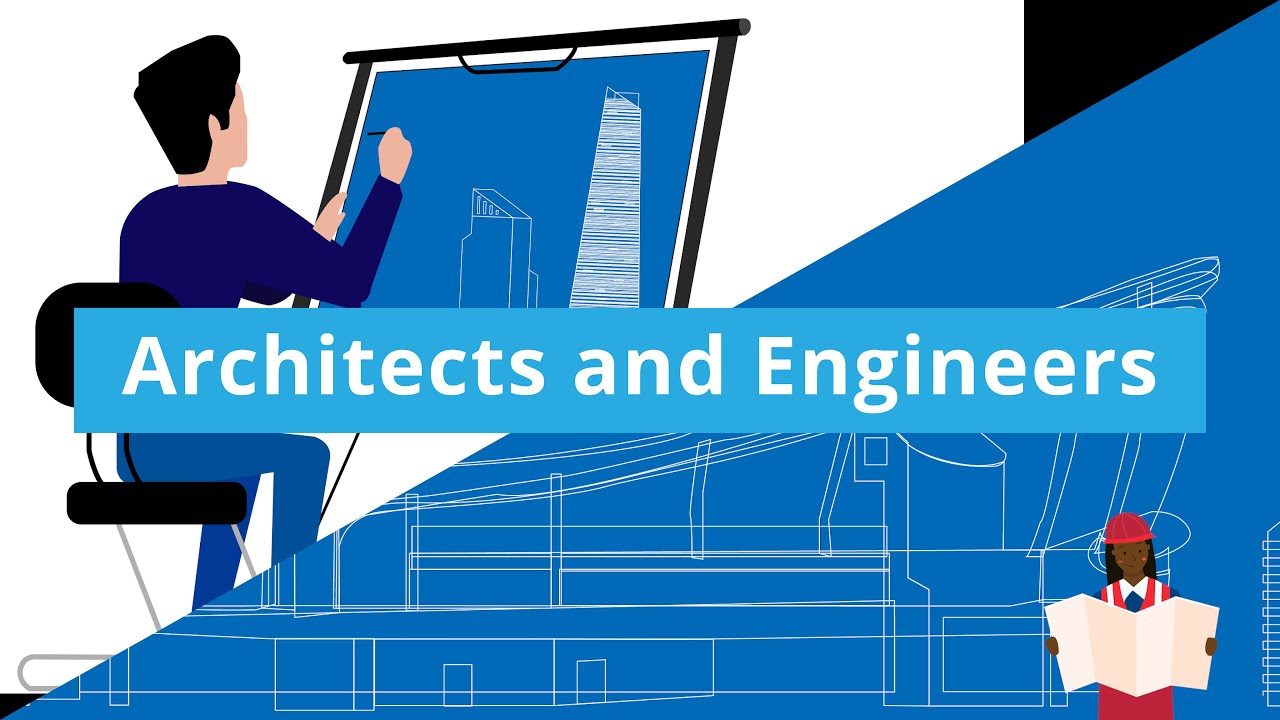Engineering and Architecture
Engineering and architecture are closely linked fields, but they focus on different aspects of design and construction. Below are the key details of both fields:
1. Engineering Details:
Engineering involves the application of scientific principles to design, build, and analyze structures, machines, systems, and processes. There are many different branches of engineering, each focusing on specific aspects of technology, materials, and systems.
Types of Engineering:
- Civil Engineering: Deals with the design, construction, and maintenance of infrastructure such as bridges, roads, dams, and buildings.
- Mechanical Engineering: Focuses on the design, analysis, and manufacturing of mechanical systems and machines.
- Electrical Engineering: Deals with electrical systems, including power generation, electronics, and communication systems.
- Structural Engineering: A subset of civil engineering, focuses on designing and ensuring the stability and strength of structures.
- Environmental Engineering: Concerned with solutions to environmental challenges, such as water treatment, pollution control, and sustainable development.
- Chemical Engineering: Focuses on the processes involved in large-scale manufacturing of chemicals, pharmaceuticals, and materials.
Engineering Design Process:
- Problem Definition: Understanding the issue and gathering requirements.
- Conceptual Design: Developing a conceptual solution.
- Feasibility Study: Analyzing the practicality of the proposed design.
- Detailed Design: Creating detailed plans, blueprints, and specifications.
- Prototyping and Testing: Building models or prototypes and testing them.
- Implementation/Construction: Real-world implementation and construction.
- Maintenance and Evaluation: Long-term support and evaluation for improvements.
Key Considerations:
- Safety: Ensuring that designs are safe for both users and the environment.
- Cost-efficiency: Balancing cost constraints with functionality.
- Materials: Selecting the appropriate materials for strength, durability, and cost.
- Sustainability: Incorporating eco-friendly methods and renewable resources.
- Innovation: Using advanced technology and techniques to improve performance.
2. Architecture Details:
Architecture involves the planning, design, and construction of buildings and other physical structures. It blends creativity, aesthetics, and functionality with the requirements of engineering.
Key Aspects of Architecture:
- Design Principles: Architects focus on how a structure looks and feels while meeting functional needs. They consider aspects like aesthetics, spatial organization, lighting, ventilation, acoustics, and user experience.
- Space Planning: Arranging spaces within a structure to ensure that they function effectively. This includes considerations for flow, comfort, and accessibility.
- Sustainability in Architecture: Implementing energy-efficient designs, using sustainable materials, and reducing the building’s environmental impact.
- Urban Planning: Architects often work at a larger scale, designing layouts for entire cities or neighborhoods, considering infrastructure, zoning, and social needs.
Architectural Design Process:
- Conceptualization: Initial sketches and conceptual designs based on the client's needs.
- Schematic Design: A more detailed version of the concept, including floor plans, elevations, and site planning.
- Design Development: Finalizing design details and ensuring they align with building codes, regulations, and structural requirements.
- Construction Documentation: Creating detailed drawings, specifications, and instructions for contractors and engineers.
- Construction and Supervision: Overseeing the building process to ensure quality and adherence to design.
- Post-Construction Evaluation: Assessing the building's functionality and making necessary adjustments.
Types of Architecture:
- Residential Architecture: Design of homes, apartments, and housing complexes.
- Commercial Architecture: Design of offices, retail spaces, and public buildings.
- Landscape Architecture: The planning and design of outdoor spaces, including parks, gardens, and campuses.
- Interior Architecture: Focuses on the design of interior spaces, balancing aesthetics, function, and safety.
- Sustainable Architecture: Design that minimizes environmental impact, uses eco-friendly materials, and incorporates energy-saving technologies.
Architectural Styles:
- Classical Architecture: Originating from ancient Greece and Rome, characterized by symmetry, columns, and formal designs.
- Modern Architecture: Focuses on minimalism, functionality, and the use of modern materials like steel, glass, and concrete.
- Gothic Architecture: Known for its pointed arches, ribbed vaults, and flying buttresses, often seen in cathedrals.
- Postmodern Architecture: A reaction against modernism, often incorporating humor, complexity, and historical references.
Collaboration Between Engineering and Architecture:
In most building projects, engineers and architects collaborate closely to ensure that the final product is both functional and aesthetically pleasing. Architects generally focus on the design and visual aspects, while engineers ensure that the structure is safe, sustainable, and viable. Both professions need to consider a variety of factors, including:
- Code compliance: Ensuring that designs meet local building codes and regulations.
- Technology integration: Incorporating modern technology into both design and construction.
- Client needs: Balancing the client’s vision with technical feasibility and budget.
By working together, engineers and architects can create buildings and infrastructure that are both beautiful and functional while maintaining safety, sustainability, and cost-efficiency.


